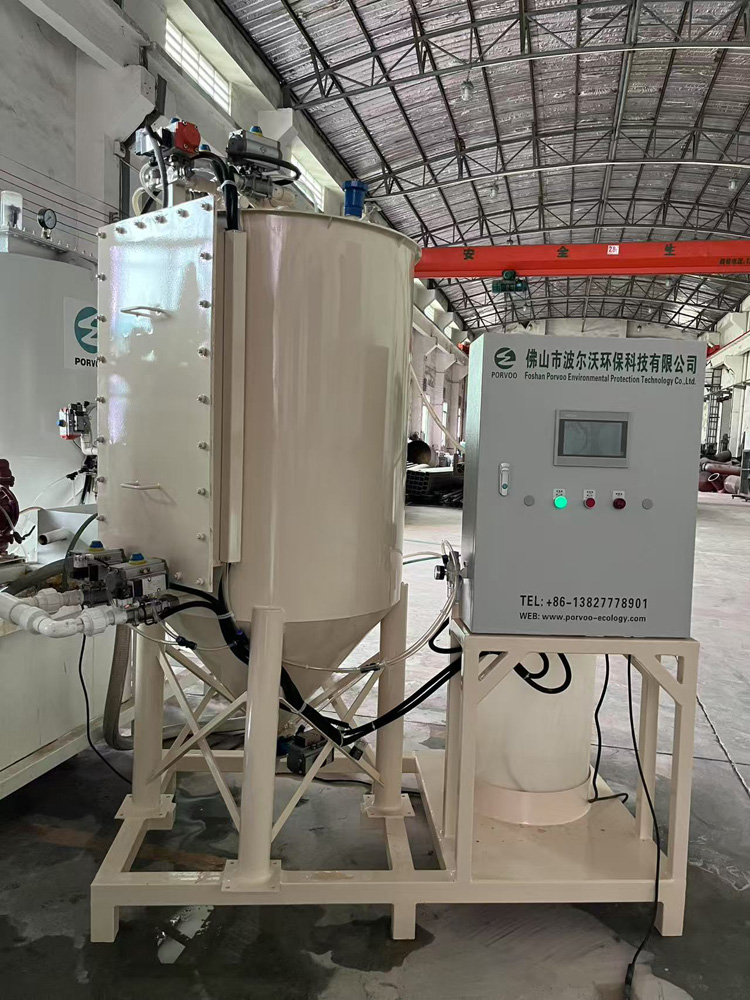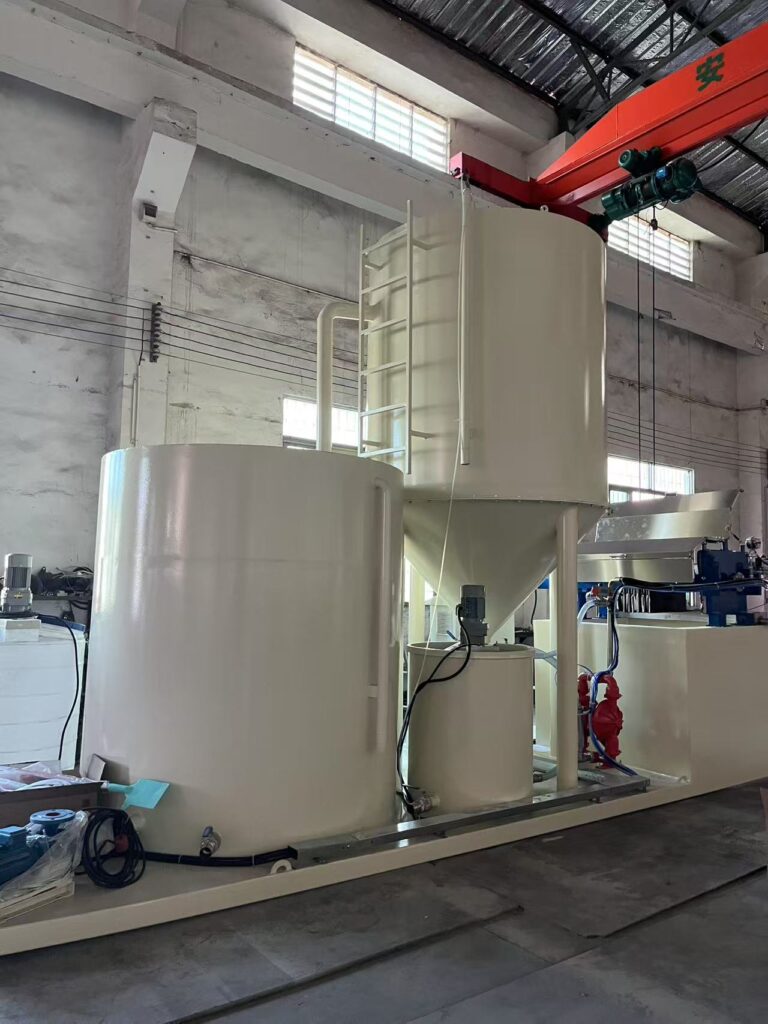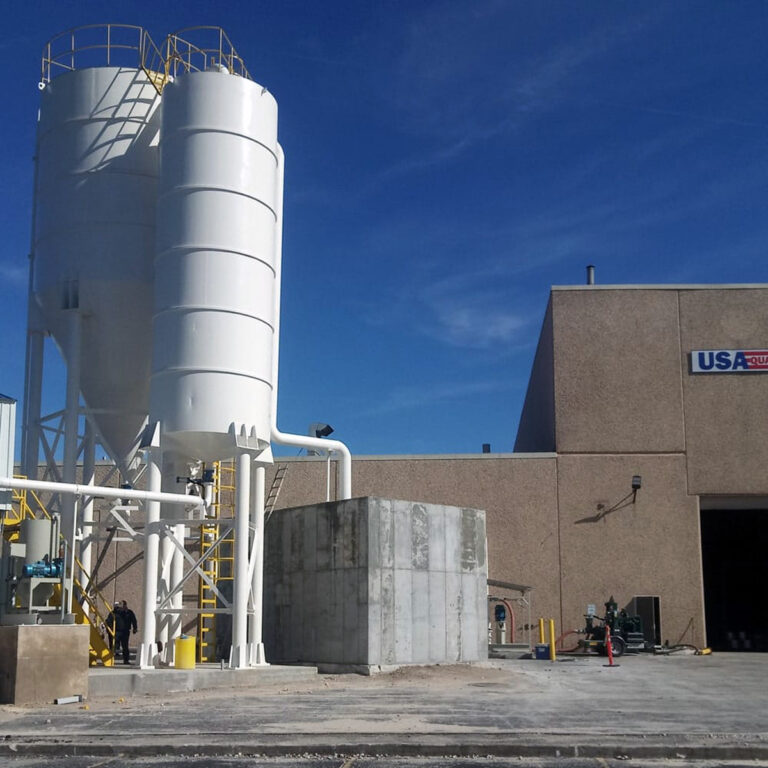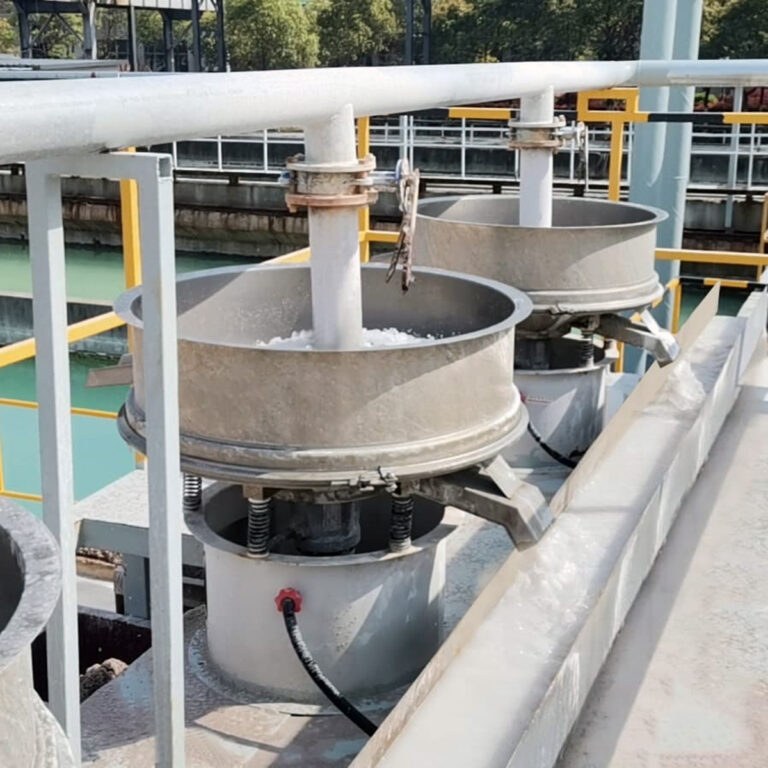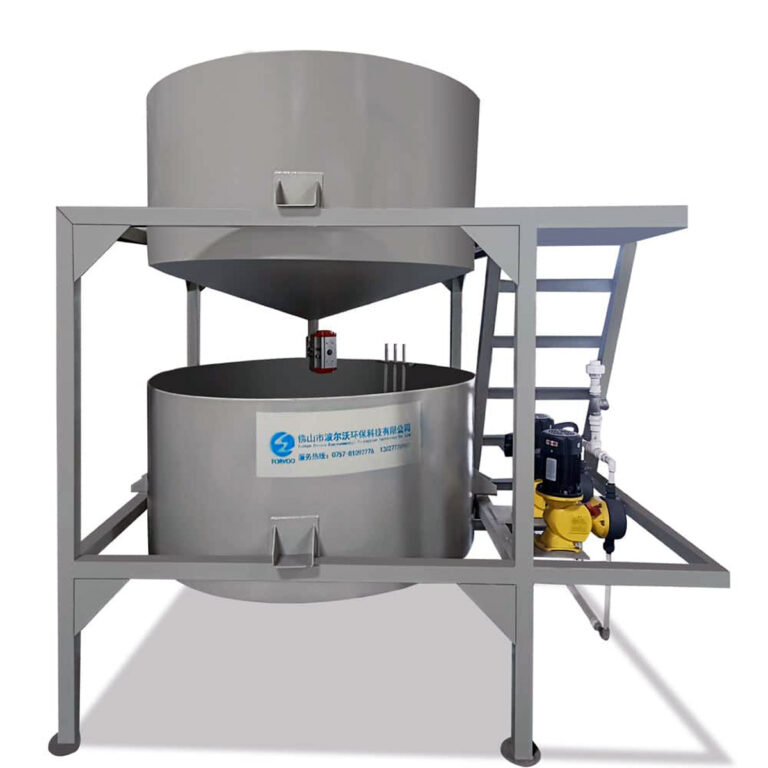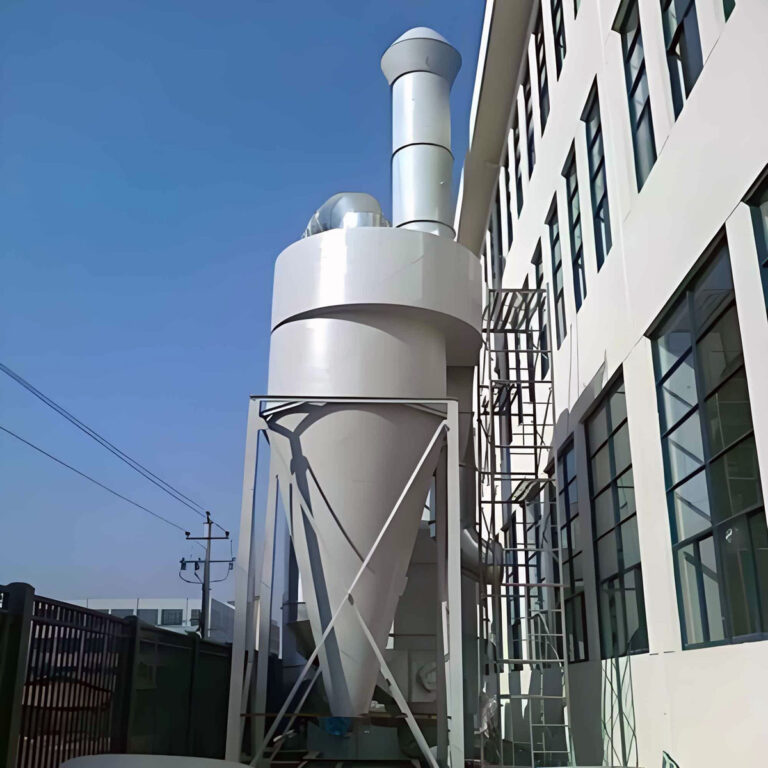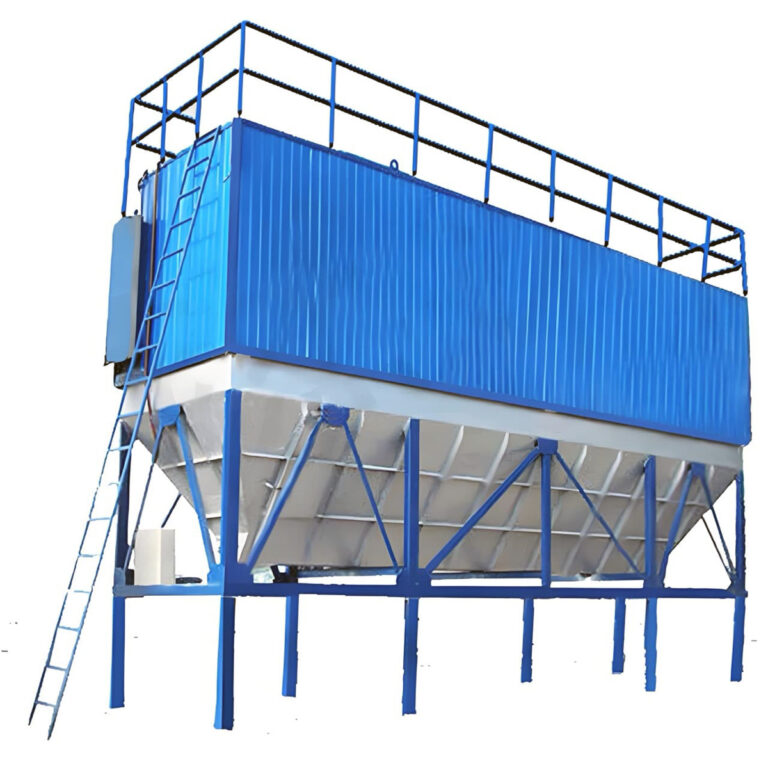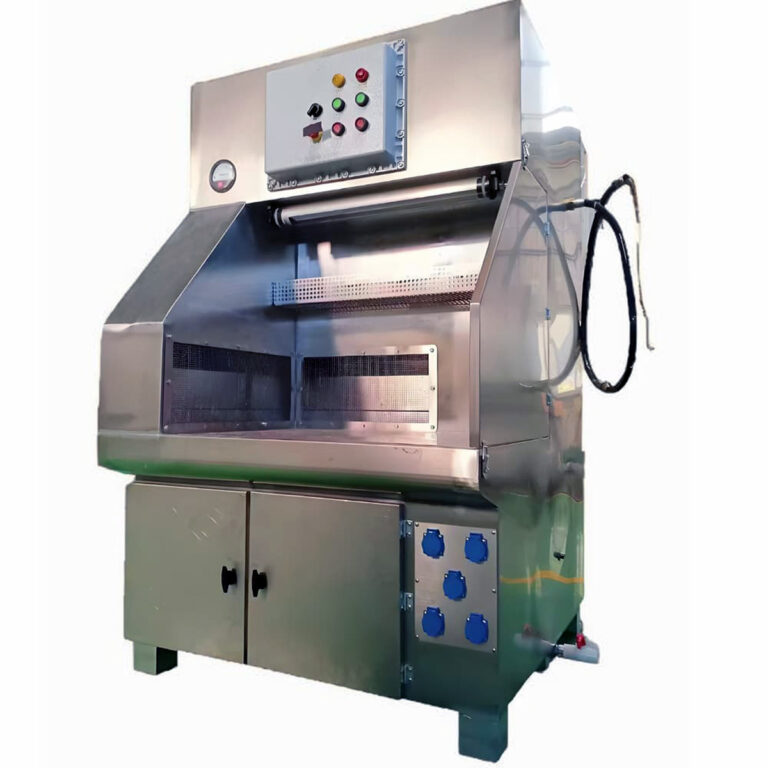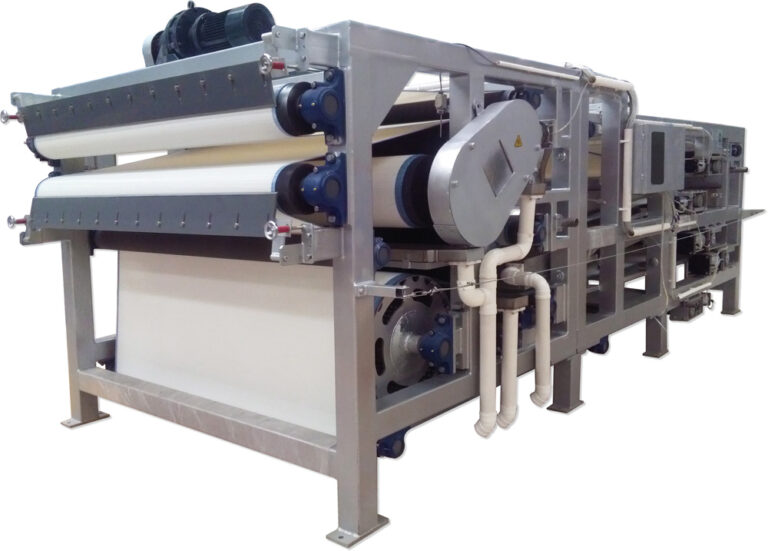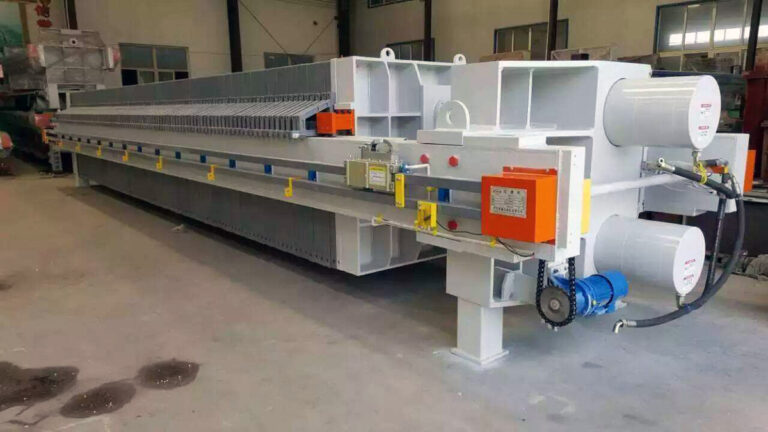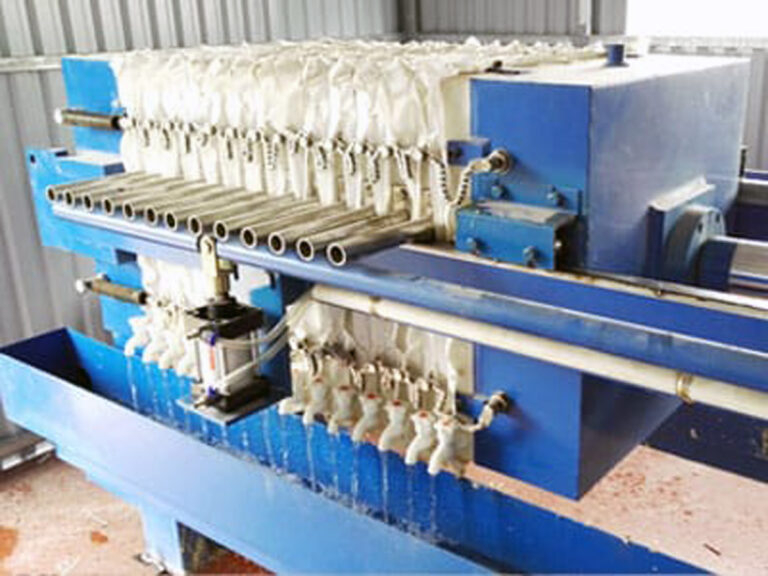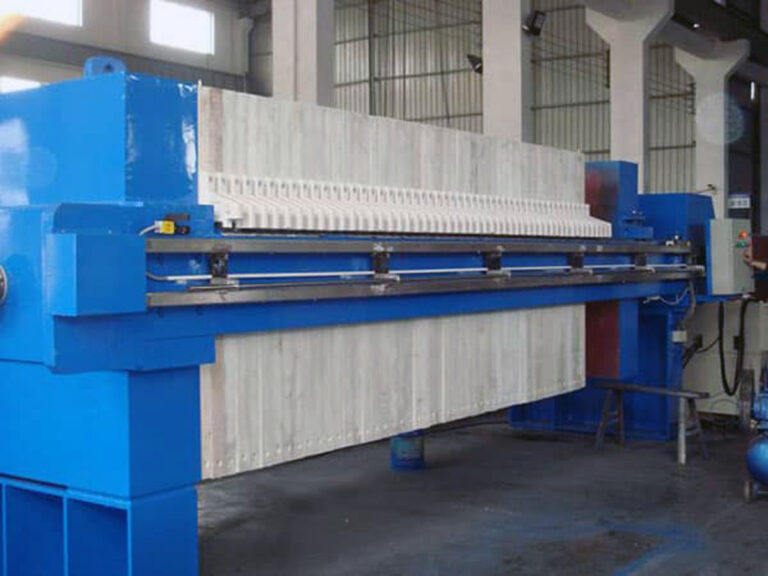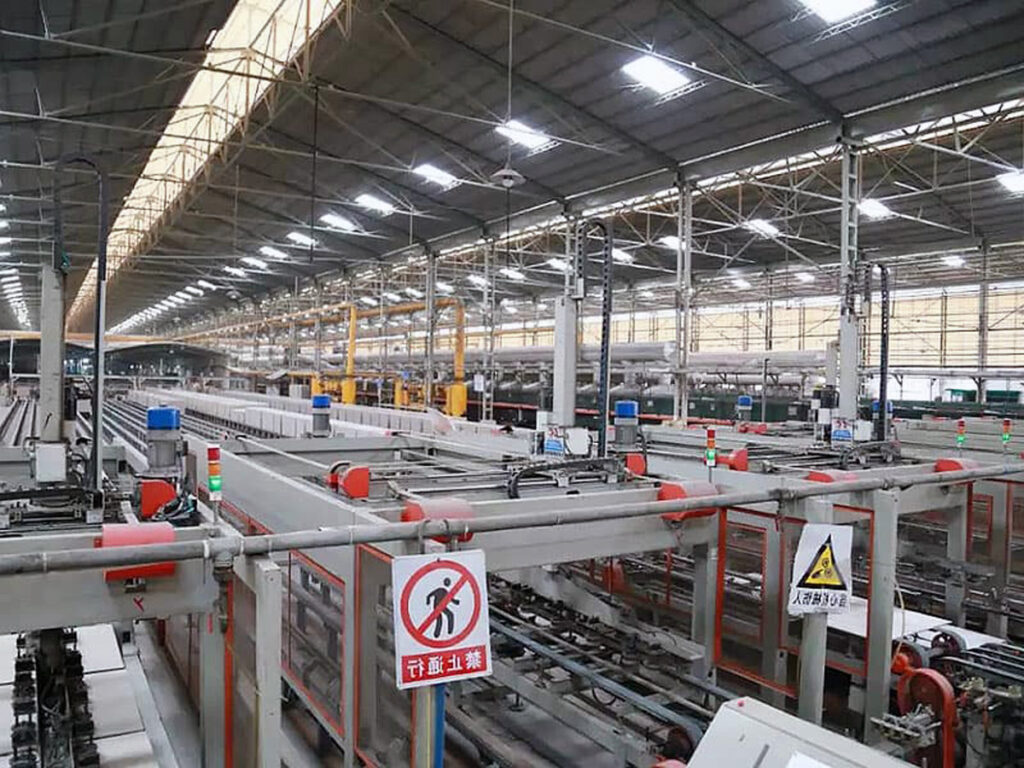Industrial water standards represent a comprehensive framework of regulations, guidelines, and performance criteria that govern how facilities manage water resources and discharge wastewater. These standards encompass everything from raw water intake requirements to final effluent discharge limits, creating a regulatory ecosystem that varies significantly across industries and geographic locations.
The foundation of these standards rests on protecting public health and environmental resources. PORVOO has observed that facilities often underestimate the interconnected nature of water regulations, where a single discharge point may be subject to multiple overlapping requirements from federal, state, and local authorities.
Primary Categories of Water Standards
Effluent limitation guidelines establish the maximum allowable concentrations of pollutants in industrial discharges. These technology-based standards vary by industry sector, with manufacturing facilities typically facing stricter requirements than service-based operations. The EPA has established specific guidelines for over 50 industrial categories, each reflecting unique operational characteristics and potential environmental impacts.
Water quality standards focus on the receiving water body’s ability to support designated uses such as drinking water supply, recreation, or aquatic life habitat. These standards create a direct connection between industrial discharge quality and environmental protection, requiring facilities to consider downstream impacts when designing treatment systems.
Economic and Operational Implications
Compliance with industrial water standards directly impacts operational costs, with treatment expenses typically representing 2-8% of total manufacturing costs depending on industry sector. However, companies that proactively invest in advanced treatment technologies often discover operational benefits including reduced water consumption, improved process efficiency, and enhanced regulatory relationships.
The regulatory landscape continues evolving, with emerging contaminants and stricter enforcement creating new compliance challenges. Facilities must balance current regulatory requirements with anticipated future standards, making strategic investments that ensure long-term compliance while maintaining competitive positioning.
| Standard Type | Typical Parameters | Industry Impact |
|---|---|---|
| Effluent Limits | BOD, TSS, pH, Heavy Metals | Direct discharge restrictions |
| Pretreatment | Specific pollutants by industry | Municipal treatment protection |
| Stormwater | Runoff quality, monitoring | Site-wide water management |
How Do Wastewater Discharge Standards Vary Across Industries?
Industrial sectors face dramatically different wastewater discharge standards based on their operational characteristics, raw materials, and potential environmental impacts. The EPA’s categorical approach recognizes that a pharmaceutical facility’s discharge risks differ substantially from those of a textile manufacturer or food processing plant.
Manufacturing industries typically encounter the most stringent requirements, particularly those involving chemical processes, metal finishing, or pharmaceutical production. These facilities often must achieve effluent limits measured in parts per billion for certain contaminants, requiring sophisticated treatment technologies and continuous monitoring systems.
Sector-Specific Requirements
The pulp and paper industry exemplifies how sector-specific standards address unique operational challenges. These facilities must manage high-volume discharges containing organic compounds, suspended solids, and chlorinated materials. Current standards require advanced biological treatment combined with chemical precipitation, achieving removal efficiencies exceeding 95% for key parameters.
Metal finishing operations face particularly complex requirements due to heavy metal contamination potential. These facilities must implement comprehensive pretreatment systems addressing chromium, nickel, copper, and zinc, with discharge limits often requiring treatment to below 1 mg/L for individual metals. The investment in treatment infrastructure can represent 15-25% of total facility capital costs.
Geographic and Regulatory Variations
Regional differences significantly impact industrial water standards implementation. California’s stringent regulations often exceed federal requirements, while states like Texas focus on industry-specific flexibility within federal frameworks. These variations create compliance challenges for multi-state operations requiring standardized approaches across diverse regulatory environments.
In our experience, facilities operating in multiple jurisdictions benefit from adopting the most stringent applicable standards as their baseline, simplifying operational procedures while ensuring comprehensive compliance. This approach, while initially more expensive, reduces long-term compliance risks and operational complexity.
What Key Regulations Govern Industrial Water Quality?
The regulatory framework for industrial water quality regulations operates through multiple interconnected federal, state, and local requirements, creating a complex compliance environment that demands comprehensive understanding and strategic planning. The Clean Water Act serves as the primary federal foundation, establishing the National Pollutant Discharge Elimination System (NPDES) permit program that governs most industrial discharges.
Federal regulations provide the baseline requirements, but state and local authorities often impose additional restrictions based on regional environmental conditions and water resource priorities. This layered approach means facilities must simultaneously comply with federal technology-based standards, state water quality standards, and local pretreatment requirements.
Federal Regulatory Structure
The EPA’s categorical standards establish minimum national requirements for specific industry sectors, with regulations covering over 50 industrial categories. These standards typically specify both technology-based treatment requirements and numerical discharge limits, creating a comprehensive framework that addresses both treatment methodology and performance outcomes.
Recent regulatory trends emphasize emerging contaminants and enhanced monitoring requirements. The EPA has signaled increased focus on per- and polyfluoroalkyl substances (PFAS), pharmaceuticals, and endocrine-disrupting compounds, with new regulations expected within the next five years that will significantly impact affected industries.
State and Local Implementation
State environmental agencies implement federal standards while often adding more stringent requirements based on local water quality conditions. States like California and New York have developed comprehensive industrial water programs that exceed federal minimums, requiring enhanced treatment technologies and more frequent monitoring.
Local pretreatment programs create additional compliance layers for facilities discharging to municipal treatment systems. These programs protect municipal infrastructure while ensuring combined treatment effectiveness, often requiring specialized pretreatment for heavy metals, volatile organic compounds, and high-strength waste streams.
| Regulatory Level | Primary Focus | Typical Requirements |
|---|---|---|
| Federal (EPA) | Technology-based standards | Categorical limits, monitoring |
| State | Water quality protection | Enhanced limits, additional parameters |
| Local | Municipal system protection | Pretreatment, discharge timing |
How Can Companies Achieve Environmental Compliance in Water Treatment?
Achieving environmental compliance water treatment requires a systematic approach that integrates regulatory knowledge, technological solutions, and operational management into a comprehensive compliance strategy. Successful companies recognize that compliance extends beyond simply meeting discharge limits to encompass documentation, monitoring, reporting, and continuous improvement processes.
The foundation of effective compliance begins with thorough regulatory analysis identifying all applicable requirements. This assessment must consider direct discharge permits, pretreatment requirements, stormwater regulations, and any special conditions based on facility location or operational characteristics. Companies often discover that comprehensive compliance requires addressing 15-20 different regulatory requirements simultaneously.
Treatment System Design and Implementation
Effective treatment system design balances regulatory compliance with operational efficiency and cost management. Modern industrial wastewater treatment solutions incorporate multiple treatment stages, typically including physical, chemical, and biological processes optimized for specific contaminant removal requirements.
Primary treatment focuses on removing suspended solids, oils, and other physical contaminants through screening, sedimentation, and flotation processes. Secondary treatment employs biological processes to remove dissolved organic compounds, achieving removal efficiencies of 85-95% for biochemical oxygen demand and total suspended solids.
Advanced treatment technologies address specific regulatory requirements such as nutrient removal, heavy metal precipitation, and trace organic compound elimination. These systems often incorporate membrane bioreactors, activated carbon adsorption, and chemical precipitation processes, requiring sophisticated process control and monitoring capabilities.
Monitoring and Documentation Systems
Comprehensive monitoring programs ensure continuous compliance while providing early warning of potential problems. Effective systems combine automated monitoring for key parameters with periodic sampling for comprehensive analysis, creating a robust data foundation for regulatory reporting and process optimization.
Documentation requirements extend beyond simple monitoring data to include operational logs, maintenance records, and incident reports. Companies that excel in compliance maintain detailed records demonstrating consistent operational performance and proactive problem resolution, building positive relationships with regulatory authorities.
According to industry research, facilities with comprehensive monitoring systems experience 60% fewer compliance violations compared to those relying on minimum monitoring requirements. This investment in enhanced monitoring typically pays for itself through reduced regulatory risk and improved operational efficiency.
What Are the Essential Components of Industrial Water Treatment Standards?
Water treatment standards encompass multiple interconnected components that collectively ensure environmental protection while maintaining operational feasibility. These standards address both the performance requirements facilities must achieve and the methods used to demonstrate compliance, creating a comprehensive framework that governs industrial water management practices.
Physical and chemical parameters form the foundation of most water treatment standards, with specific limits established for conventional pollutants including biochemical oxygen demand, total suspended solids, pH, and oil and grease. These parameters reflect the basic treatment capabilities expected from properly designed and operated treatment systems.
Conventional and Non-Conventional Parameters
Conventional pollutants represent the most common constituents requiring treatment, with standards typically based on proven treatment technologies and widespread industry experience. BOD limits commonly range from 30-60 mg/L for direct discharge, while TSS limits often fall between 30-100 mg/L depending on receiving water characteristics and treatment technology employed.
Non-conventional parameters address industry-specific pollutants that require specialized treatment approaches. These may include specific organic compounds, nutrients, or other constituents that pose unique environmental risks. Treatment standards for non-conventional parameters often require more sophisticated technologies and enhanced monitoring capabilities.
Toxic Pollutant Management
Priority pollutants represent the most stringent component of water treatment standards, with limits often established at technology-based levels that require best available technology implementation. These standards address 126 specific compounds including heavy metals, pesticides, and volatile organic compounds that pose significant environmental and health risks.
Heavy metal standards typically require treatment to levels below 1 mg/L for individual metals, with some parameters regulated at concentrations measured in micrograms per liter. Achieving these limits requires sophisticated treatment technologies including chemical precipitation, ion exchange, and membrane filtration systems.
| Parameter Category | Typical Limits | Treatment Approach |
|---|---|---|
| Conventional | BOD: 30-60 mg/L | Biological treatment |
| Non-conventional | Ammonia: 5-25 mg/L | Nitrification/denitrification |
| Toxic | Chromium: 0.2-2.0 mg/L | Chemical precipitation |
How Do Modern Treatment Technologies Meet Regulatory Requirements?
Modern treatment technologies have evolved to address increasingly stringent regulatory requirements while improving operational efficiency and reducing lifecycle costs. Advanced treatment systems integrate multiple processes into comprehensive solutions that achieve consistent compliance with complex regulatory frameworks.
Membrane bioreactor (MBR) technology represents a significant advancement in biological treatment, combining activated sludge processes with membrane filtration to achieve superior effluent quality. MBR systems typically achieve BOD and TSS removal efficiencies exceeding 99%, producing effluent suitable for direct discharge or advanced treatment processes.
Advanced Biological Treatment Systems
Moving bed biofilm reactors (MBBR) provide enhanced biological treatment in compact configurations, particularly effective for facilities with space constraints or variable loading conditions. These systems maintain high biomass concentrations while providing operational flexibility that traditional activated sludge systems cannot match.
Sequencing batch reactors (SBR) offer operational advantages for facilities with intermittent discharge patterns or varying waste characteristics. These systems provide complete treatment in a single reactor through timed operational cycles, achieving nutrient removal and consistent effluent quality with minimal operator intervention.
Chemical and Physical Treatment Integration
Advanced oxidation processes (AOP) address recalcitrant organic compounds that resist conventional biological treatment. These systems employ combinations of ozone, hydrogen peroxide, and ultraviolet light to break down complex organic molecules, achieving removal efficiencies exceeding 90% for many pharmaceutical and industrial compounds.
Electrocoagulation technology provides effective heavy metal removal while reducing chemical consumption compared to traditional precipitation systems. This approach has demonstrated particular effectiveness for metal finishing and electronic manufacturing applications, achieving discharge limits below 0.1 mg/L for critical metals.
A pharmaceutical manufacturing facility implementing integrated MBR and AOP treatment achieved 99.8% removal efficiency for active pharmaceutical ingredients while reducing treatment costs by 25% compared to conventional systems. The facility has maintained consistent regulatory compliance for over three years with minimal operational adjustments.
What Challenges Do Companies Face in Meeting Water Quality Standards?
Companies encounter significant challenges when implementing comprehensive water quality compliance programs, with technical complexity, regulatory uncertainty, and cost management representing the primary obstacles to successful implementation. These challenges often interact in ways that amplify difficulties and require sophisticated management approaches.
Technical complexity tops the list of implementation challenges, particularly for facilities generating diverse waste streams or operating in industries with rapidly evolving treatment requirements. Companies must simultaneously address multiple contaminants requiring different treatment approaches, creating system design challenges that demand extensive technical expertise and operational coordination.
Regulatory Uncertainty and Changing Standards
The evolving regulatory landscape creates ongoing challenges for long-term compliance planning. New regulations addressing emerging contaminants, climate change impacts, and enhanced environmental protection continue developing, requiring companies to anticipate future requirements while managing current compliance obligations.
PFAS regulations exemplify this challenge, with federal and state requirements developing simultaneously through different regulatory pathways. Companies must invest in treatment capabilities for compounds that may face varying regulatory approaches, creating uncertainty about optimal treatment strategies and compliance timeframes.
Cost Management and Resource Allocation
Treatment system capital costs represent significant financial commitments, with advanced treatment facilities often requiring investments of $500,000 to $5 million depending on facility size and treatment requirements. These investments must be justified against operational benefits and regulatory compliance necessities while competing with other strategic priorities.
Operational costs present ongoing challenges, particularly for energy-intensive treatment processes and specialized chemical additives. Companies report that treatment operational costs can increase by 40-60% when upgrading to advanced treatment technologies, requiring careful economic analysis and operational optimization to maintain competitiveness.
While these challenges are substantial, companies that develop comprehensive compliance strategies typically discover operational benefits including reduced water consumption, improved process efficiency, and enhanced regulatory relationships that offset increased treatment costs.
How to Develop an Effective Water Compliance Strategy?
Developing an effective water compliance strategy requires systematic planning that integrates regulatory analysis, technology selection, operational procedures, and continuous improvement processes into a cohesive management framework. Successful strategies address both immediate compliance requirements and long-term regulatory trends while maintaining operational flexibility and cost effectiveness.
The strategic development process begins with comprehensive regulatory assessment identifying all applicable requirements and potential future regulatory changes. This assessment must consider direct discharge permits, pretreatment requirements, stormwater regulations, and any special conditions based on facility location or operational characteristics.
Technology Selection and Implementation Planning
Technology selection requires balancing regulatory compliance requirements with operational constraints, capital availability, and lifecycle costs. Companies benefit from evaluating multiple treatment alternatives through pilot testing and detailed engineering analysis, ensuring selected technologies can achieve consistent compliance under varying operational conditions.
Implementation planning must address construction logistics, operational training, and regulatory approval processes. Successful implementations typically require 12-18 months from initial design through full operational capability, with regulatory approval processes often representing the longest component of project timelines.
Operational Excellence and Continuous Improvement
Operational excellence in water compliance requires comprehensive management systems addressing monitoring, maintenance, training, and documentation requirements. Companies that excel in compliance maintain detailed procedures for all operational aspects while empowering operators to make real-time adjustments based on system performance.
Continuous improvement processes ensure compliance strategies adapt to changing regulations and operational requirements. Regular compliance audits, technology assessments, and regulatory updates help companies maintain effective compliance while identifying opportunities for operational enhancement and cost reduction.
Expert analysis indicates that companies with proactive compliance strategies experience 75% fewer regulatory violations and 40% lower treatment costs compared to reactive approaches. This investment in comprehensive planning typically provides returns through reduced regulatory risk and improved operational efficiency.
Leading companies are implementing comprehensive treatment solutions that address current regulatory requirements while providing flexibility for future regulatory changes. These systems integrate multiple treatment technologies with advanced monitoring and control capabilities, ensuring long-term compliance capability.
Understanding and implementing effective industrial water standards requires comprehensive planning, appropriate technology selection, and ongoing operational excellence. Companies that invest in proactive compliance strategies not only meet regulatory requirements but often discover operational benefits that enhance overall business performance. The regulatory landscape will continue evolving, but facilities with robust compliance frameworks are well-positioned to adapt while maintaining operational effectiveness and environmental stewardship.
Frequently Asked Questions
Q: What are Industrial Water Standards and why are they important for environmental compliance?
A: Industrial Water Standards are regulations that set limits on the types and amounts of pollutants industries can release into water sources. They are crucial for environmental compliance because they protect water quality, safeguard aquatic ecosystems, and ensure public health. By following these standards, industries reduce harmful discharges such as heavy metals, chemicals, and organic waste, which helps maintain safe, sustainable water environments.
Q: How do industrial facilities comply with these water standards?
A: Industrial facilities comply through several key steps:
- Obtaining necessary permits (e.g., NPDES permits) that specify allowable pollutant levels
- Treating wastewater using physical (filtration, sedimentation), chemical (neutralization), and biological (bacteria breakdown) processes
- Regularly monitoring and reporting discharge quality to regulatory agencies
- Implementing pollution prevention measures and improving treatment technology
Compliance ensures the discharge meets legal limits, minimizing environmental harm.
Q: What are the main regulations governing industrial water discharge in the United States?
A: The primary regulations include:
- The Clean Water Act (CWA), which controls pollutant discharges into surface water via the National Pollutant Discharge Elimination System (NPDES)
- Effluent guidelines under CWA Section 304(m), which require economically and technologically achievable treatment
- The Safe Drinking Water Act (SDWA) focuses on drinking water quality but influences industrial water management indirectly
These laws require permits, regular monitoring, and enforcement to maintain water quality standards.
Q: What happens if an industrial facility fails to meet water standards and environmental compliance requirements?
A: Failure to comply can lead to:
- Enforcement actions including fines and penalties
- Restrictions or revocation of permits to discharge wastewater
- Legal liability for environmental damage, including civil and criminal charges
- Increased oversight and mandatory corrective measures
Such enforcement ensures industrial facilities prioritize pollutant control and environmental protection.
Q: How do evolving environmental challenges impact industrial water standards?
A: Factors like climate change and emerging contaminants (e.g., PFAS) complicate compliance as they demand stricter, adaptive regulations. Industries must continuously upgrade treatment technologies and improve monitoring to address these evolving threats. Regulatory agencies are also updating standards to reflect new scientific understanding, requiring industries to stay informed and responsive to maintain compliance.
Q: What role do environmental compliance specialists play in managing industrial water standards?
A: Compliance specialists:
- Monitor water quality and discharge data to ensure standards are met
- Interpret and implement regulatory requirements from agencies like EPA
- Coordinate internal processes to maintain treatment effectiveness
- Prepare reports and documentation for regulatory submissions
- Keep the facility updated on evolving regulations and best practices
Their expertise is vital for sustainable industrial water management and preventing environmental violations.
External Resources
- The Role of Water Treatment in Environmental Compliance and Sustainability – Discusses key industrial water treatment practices, regulatory frameworks, and how compliance with environmental standards supports sustainable operations.
- Environmental Compliance Guidelines & Updates | T1B – Provides updates and practical guidance on environmental compliance and industrial water standards, including permissible pollutant and effluent levels.
- A List of Regulations in Water and Wastewater – Summarizes major water and wastewater standards, detailing the Clean Water Act and EPA mandates for industrial discharge and environmental protection.
- Regulatory and Guidance Information by Topic: Water – Central hub from the US EPA for information on water regulations, permits, and industrial compliance requirements under the Clean Water Act.
- Effluent Guidelines | US EPA – Details EPA-issued industrial wastewater discharge standards, known as Effluent Guidelines, and how they shape environmental compliance for various industries.
- Industrial Wastewater Treatment Standards and Compliance – Explains critical standards for industrial wastewater treatment and outlines best practices for meeting environmental compliance obligations.
